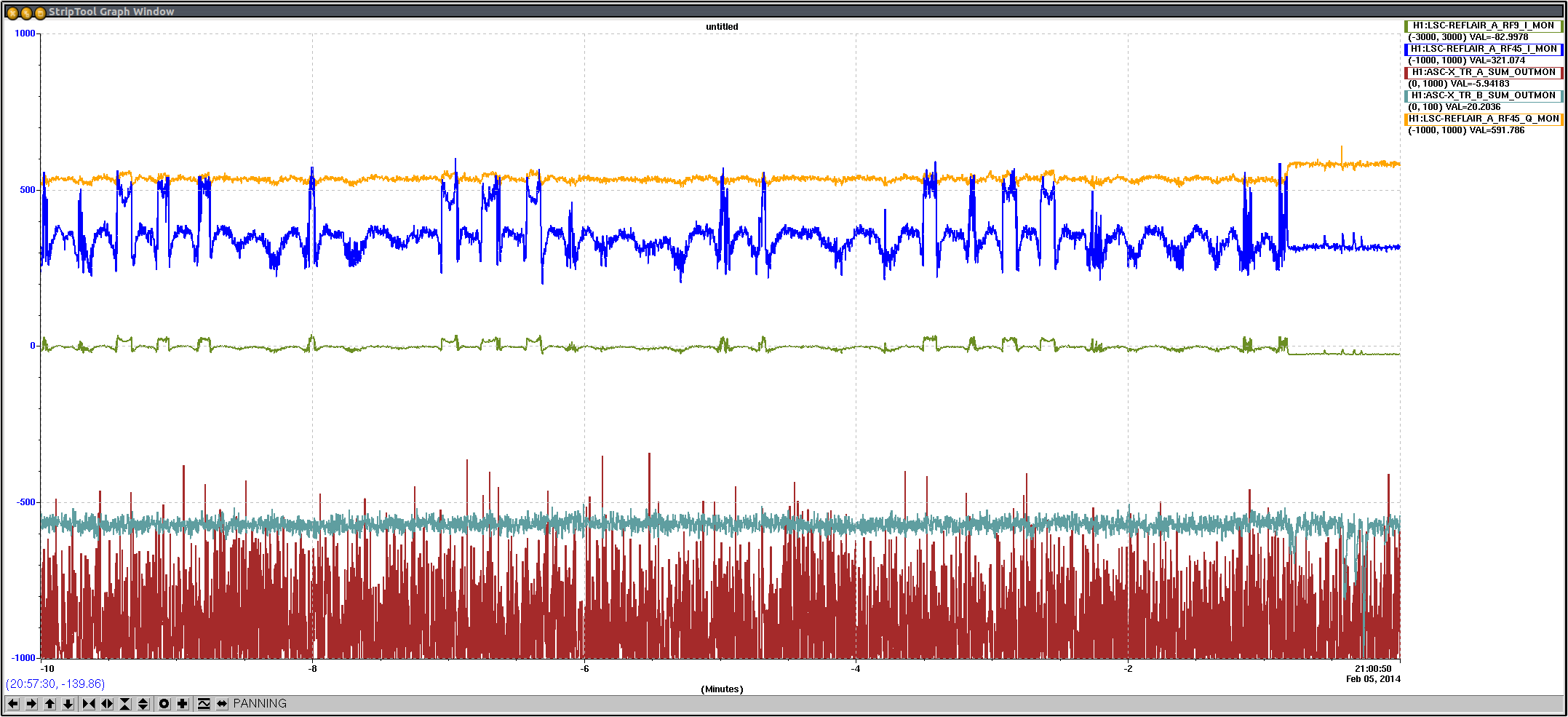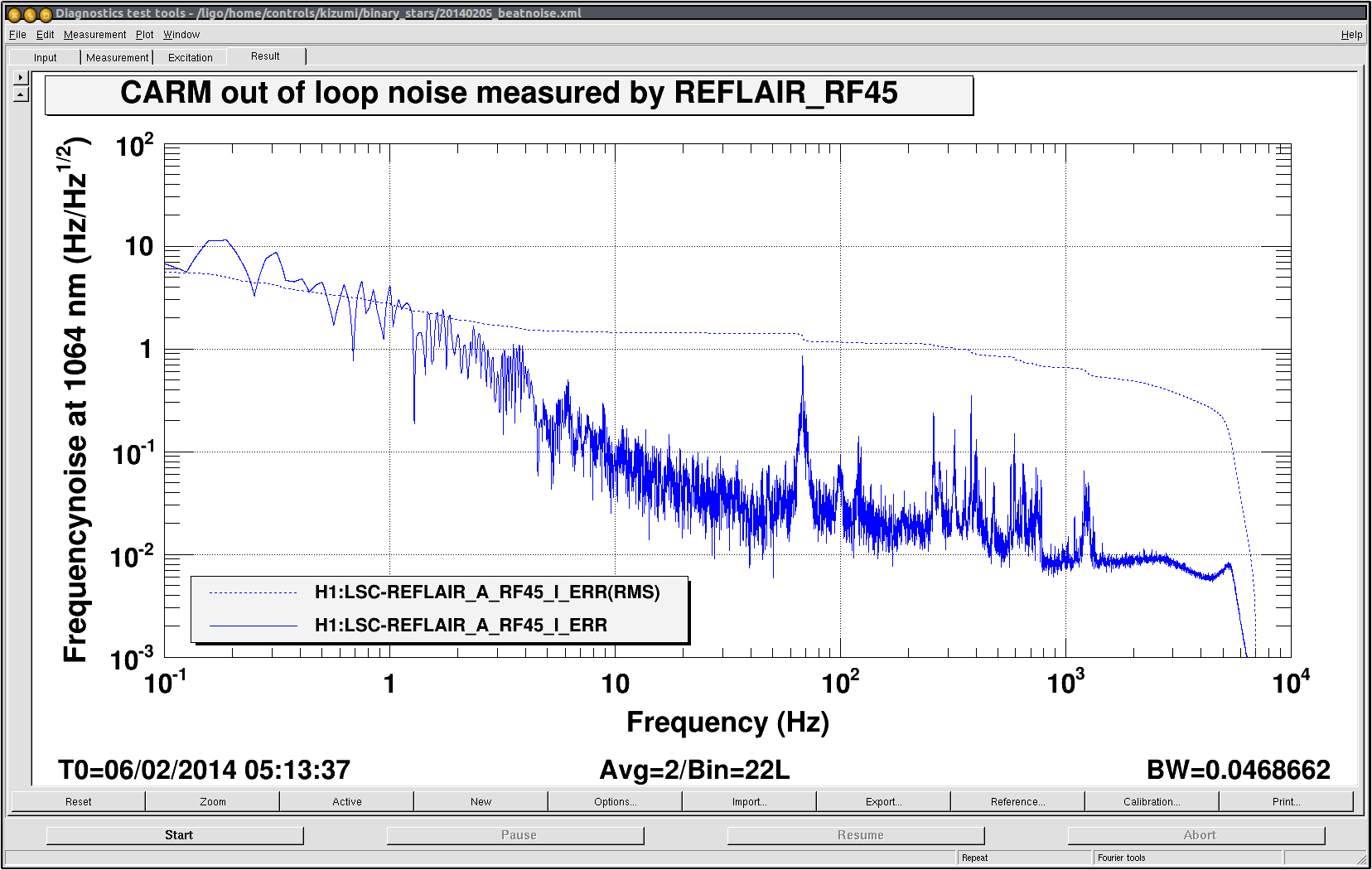Stefan, Lisa, Kiwamu,
The X arm is now quiter due to the oplev on ETMX and we are now becoming able to assess the noise performance.
Since Stefan got the oplev active loop running on ETMX and made the arm quitter, we wanted to measure the ALS infrared frequency noise by locking the PSL to the X arm using the green beatnote. The hand off process was very smooth tonight and we could try many times to bring the PSL frequency close to the arm resonance. Stefan engaged the additive offset path on top of the MCL feedback. We measured the UGF to be 3.6 kHz with a phase margin of about 64 deg.
It seems that the CARM noise is now suppressed to ~ a few 100 Hz which is unfortunately still greater than the arm linewidth of about 84 Hz. Because the fringe moved more than its linewidth, we could not confine it within the linear range. The below is a screenshot of the PDH signal in StripTool. You can see that the PDH signal, which in blue, goes back and forth around a resonance, resulting in a periodic funny shape. Also it looked like we need to have some more gain at low frequencies because we saw a low frequency excursion in the error signal.
Even though the PDH signal was pretty much out of the linear range, we calibrated REFLAIR_A_RF45 using Alexa's formula (see alog 7054) and tentatively made a noise spectrum which, of course, underestimated the actual noise due to a low optical gain. One thing we immediately noticed was that there is a 70 Hz broad peak which maybe a vibration of the periscope on ISCT1. It looks quite similar to what we had in HIFO-Y. We are not sure what this is at this point.
Note that the ISCT1 hepa filter has been intentionally off in order to get low noise.



